Queen of Oysters Project Presented in Dubrovnik
30 June 2021 - The EU-funded project entitled Queen of Oysters was presented today in Dubrovnik’s Hotel Lero. The project is focused on traditional Mali Ston shellfish farming on Peljesac Peninsula.
Project coordinators Andjela and Ksenija Matic of EventLab alongside the head of the project Vedran Kunica, presented the efforts to local tour guides today. Vedran Kunica is one of Pelješac oyster farmers and a secretary of Stonski Skoljkari – Association of Ston Shellfish Farmers.
Mali Ston Oysters recently received the European Union’s protected designation of origin and protected geographical indication. This is the only instance of such a designation for this specific type of oyster. The European flat oyster (Ostrea Edulis) has been cultivated in the Bay of Mali Ston for centuries. It is one of the most delicious oysters in the world. This is one of its very last natural habitats in Europe. Locals call it the Queen of Oysters. The intent now is to turn this delicacy into a local food brand. While Mali Ston oysters might be popular on a national level, globally they are still to receive the recognition they deserve. Most guests coming to the Dubrovnik area don’t realise they are going to be staying so close to the source of such wonderful seafood.
Project Goals
The Queen of Oysters project is complex and mainly focused on marketing and promotional efforts. It started in February this year and will last for a year. Through it a new visual identity of Mali Ston oysters is envisioned. It is simple and to the point.
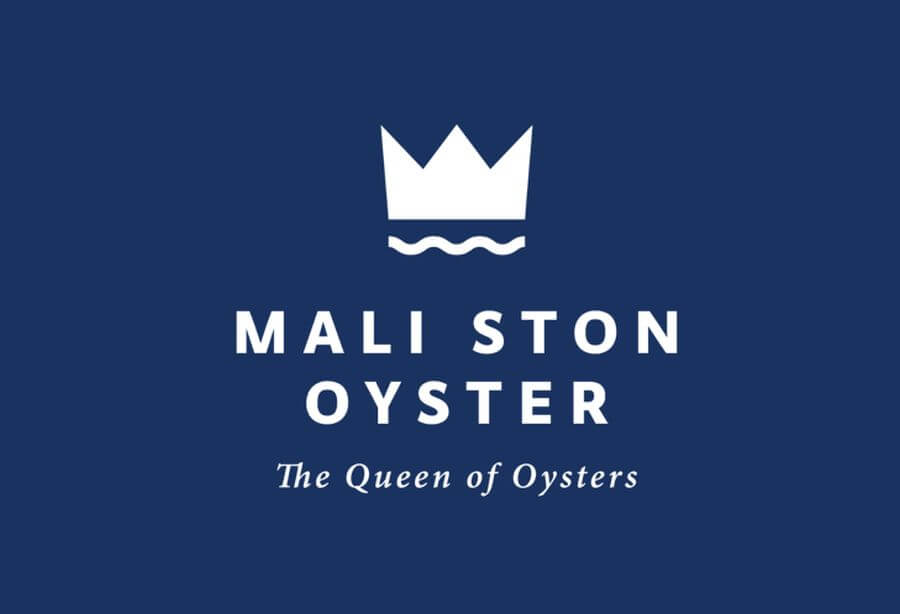
One of the goals of the project is communicating the information on local oysters to various stakeholders and raising awareness and consumption of oysters locally. Special workshops with restaurant owners and local chefs are a part of the efforts as well. Restaurants play a key role in the sales of Mali Ston oysters.
Various events were in the organisers' plans as well, but due to COVID-related restrictions, not all are going to happen.
When it comes to promotional efforts, the project is going very strong. There are oyster posters on Dubrovnik Airport and on city buses. Mali Ston oysters are also a part of Croatia Airlines' in-flight magazine. You will be able to see some project posters on Jadrolinija ferries during the summer as well. Local restaurants received hemp fabric promotional aprons featuring the project logo. The response from them is overwhelmingly positive.
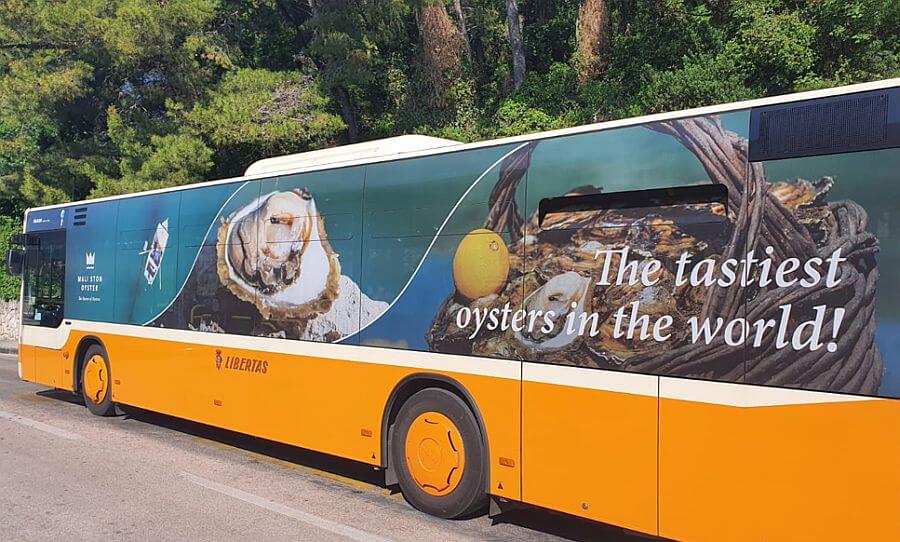
Brochures and booklets
Printed material is especially impressive. Three different booklets and flyers created through the project contain interesting information about the oysters as well and wonderful visuals. They represent a great way of raising awareness of Mali Ston oysters and the area in which they traditionally thrive. The small flyer is going to be in restaurants to inform the guests about Mali Ston Oysters. It will be at the airport as well. The design of the brochure is such as to give a bit more info on history, tradition, and oysters themselves. It also folds out into a lovely photograph. The booklet is serious informational material that contains thorough information on the oyster and the area.
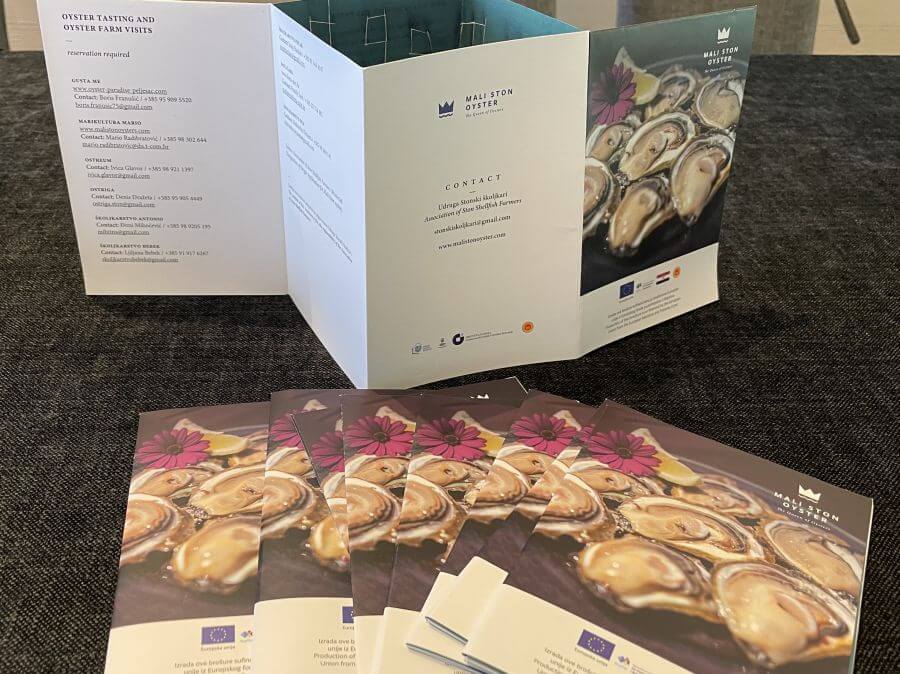
It is clear this project is the long-awaited push to brand Mali Ston oyster a bit better. Sadly, this treasure of local cuisine has spent too much time in the shadows of some other local attractions.
The presentation went off successfully with plenty of questions and suggestions from the auditorium. Also, there were some interesting ideas about how to increase sales and there was much talk about the guests and their experiences.
For more content like this follow Made in Croatia.
Prices of Croatia's Favourite Slavonian Delicacies Rising
June the 19th, 2021 - The prices of some of Croatia's favourite Slavonian delicacies are rising, with the price of the much loved Slavonian kulen potentially rising by as much as 100 kuna.
As Poslovni Dnevnik writes, the price of some Slavonian delicacies, such as kulen, could increase by 100 kuna, as was reported local portal Glas Slavonije.
Producers of dried meat products from the Eastern Croatian regions of Slavonia and Baranja, when compared to the producers of some other products, only partially felt the negative effects of the ongoing coronavirus pandemic.
The bigger producers of these typically Slavonian delicacies, who pointed out back in June last year that the pandemic had indeed caused certain problems with placement, especially from mid-March to mid-May, felt the most issues of all.
"People weren't going out and buying our products, and their purchasing power was reduced. However, the decline in those spring sales was partially compensated for during the summer and autumn of last year,'' said the director of the company Baranjka, Miodrag Komlenic.
Smaller producers of such produce claim to have managed to sell their stocks, and production, despite the pandemic, has thankfulyl not really been reduced - some have even expanded their offer.
"I can't say that the pandemic has stopped our sales. The demand is growing more and more, so I left only a certain amount in stock to meet the needs of our long-term customers,'' said Slobodan Stankovic.
He is also considering selling his items in smaller packages (of 100 or 200 grams), and is adamant that one kilo of kulen in his next ''round'' is going to cost 250 kuna (the current price is around 200 kuna per kilogram).
"One kilo of my kulen has been 200 kuna for years. But I think that the real price should be between 250 and 300 kuna,'' said Milodrag Stojkovic, the owner of a family farm (OPG) which produces Slavonian delicacies. He manages to rationalise this decision because of the raising of the price of fodder, which should soon increase by as much as 35 percent.
"Corn has already risen in price, I have to pay 200 kuna for 100 kilograms of that. I have to charge people these price increases because doing business will be impossible and completely unprofitable otherwise. Rising prices for various items are common, so it must be the same with cured meat products,'' Stojkovic concluded for Glas Slavonije.
For more, follow Made in Croatia.
For all you need to know about the wide variety of Croatian food, recipies and traditions from up and down the country, check our our dedicated section.
Cultural Identity of Vukovar: New Book Presented in Vukovar
June 9, 2021 - The fascinating question of the Cultural Identity of Vukovar is researched in a new book edited by Dr. Mateo Žanić and Petar Elez. However, as the editors stressed in the introduction, further research is needed to encompass all social groups in Vukovar and their contribution to the heritage of Vukovar.
After being published back in April this year, the book „Cultural Identity of Vukovar – Contribution to Investigating Heritage and Successors“, was presented this Wednesday in Vukovar. As Ivo Pilar Social Research Institute writes on its website the book was published in cooperation with the Vukovar State Archive, so it was only suitable that the first book presentation was held in Vukovar at the videoconference hall of College Of Applied Sciences „Lavoslav Ružička“ (named after a famous Croatian chemist whose work is awarded a Nobel Prize). In addition, the event marked International Archive Day.
The book was edited by Dr. Mateo Žanić and Petar Elez, and the presentation, alongside editors, saw scientific experts Dr. Dražen Živić, Mirela Hutinec, and Dr. Domagoj Tomas talks about the book.
„Fast events triggered by globalization process and information revolution which paradoxically lead to today's societies being fiercely occupied with the meaning of past, and preserving its valuable traces. In that context, there is a spreading interest for heritage that holds an important component to understand the relationship between the past and present“, says the editorial introduction of the book.
The editors went on to explain how „the city proved to be futile to interpret the meaning of heritage and its contribution to cultural identity,“ and the editors wanted to present various aspects of Vukovar's cultural heritage.
Apart from editors Žanić (who wrote a chapter „Layers of memories and material heritage in modern-day Vukovar) and Elez (author of the chapter „State archive in Vukovar and development of archive service in Vukovar-Srijem County“), the book features eight more authors. Ivan Rogić (Whose Heritage? Who is the successor?), Dražen Živić (on Vukovar's feudalists), Vlasta Novinc („Danube, food, Corso“), Dragana Drašković (on the cultural life of Borovo Selo), and more by Dragan Damjanović, Toni Roca, Ivana Bendra and Ivan Hubalek.
With these broad presentations of culture and heritage in Vukovar, editors hope this book will encourage further research as they are aware this is certainly not the final word on these interesting questions and issues.
„As editors, we are aware that the book does not deal with topics that concern different social groups that left their trace in Vukovar end enrich the history of the city. We hope that future editions that will deal with this topic expand the reach of issues and help us to realize better what do we inherit from the past and why is that important“, concludes the introduction of the book.
So far, the book is available only in Croatian, and research that will, as editors say, deal with other social groups in Vukovar is yet to come. Keeping in mind the terrible aftermaths of the war in Vukovar in the 90s and inter-ethnic tensions, further findings on joint cultural contribution to Vukovar may indeed be the enlightenment needed for peaceful cohabitation and development of Vukovar as a perspective city in Croatia.
Speaking of heritage, learn more about UNESCO recognized heritage in Croatia on our TC page.
For more about science in Croatia, follow TCN's dedicated page.
World Food Atlas Rates Two Croatian Cheeses Among Best in World!
June the 5th, 2021 - When it comes to what Croatia has to offer, most people will likely immediately think of the sun, the glorious Adriatic sea, the many islands and the wine. Croatin gastronomy is certainly up there on that same list, and Croatian cheeses are becoming more and more well known internationally. Two Croatian cheeses are doing so well, in fact, that they've been ranked among the planet's very best.
Pag cheese is probably the first of the Croatian cheeses to spring to the mind of the majotiy of people remotely familiar with the country's production of this much loved food item.
The bizarre moonlike northern Adriatic island of Pag, the northern part of which belongs to Lika-Senj County and the central and southern part to Zadar County, is home to some of the most mouthwatering Croatian cheese for those who aren't lactose intolerant, of course. This island produces cheese which is then exported and taken all over the world to be enjoyed by cheese lovers, and it has firmly placed the entire country on the cheese map of the globe.
The World Food Atlas from Taste Atlas has picked up on the treasure trove which is Croatian gastronomy, more precisely on Croatian cheeses, and has declared two domestic products to be among the best the world has to offer.
As Poslovni Dnevnik writes, The World Food Atlas is a well-known website which is a must-browse for all food lovers or ''foodies'', and now they have published a revised ranking with the world's best cheeses.
On the list of the top 100 best rated cheeses according to the votes of the audience, there are as many as two Croatian cheeses. Skripavac took a more than respectable 61st place, and the famous, aforementioned Pag cheese has taken an extremely impressive 14th place.
If you're a cheese lover, you can view the entire list by clicking here.
For more, make sure to follow Made in Croatia.
Croatian Culinary Heritage to be Protected with European Union Funds
April the 13th, 2021 - CUHaCHA might seem like a strange word and a bit of a mouthful to try to pronounce, but this project is set to set just how important Croatian culinary heritage is firmly in stone.
As Poslovni Dnevnik/Marta Duic writes, aware that traditional food plays a major role in the tradition and folklore of countries and is the basis of cultural heritage, the Zadar County Agency for Rural Development - AGRRA, the Ministry of Education, Science, Culture and Sports of the Herzegovina-Neretva County-Canton, the Tivat Municipality and Zadar County have jointly launched the CUHaCHA project.
As Ana Zubcic, AGRRA's international cooperation project manager, explained, tradition, Croatian cultural heritage and that of other surrounding countries, gastronomy and catering/hospitality are inextricably intertwined in this region. In addition, Zubcic pointed out, local cuisine and local products can encourage both innovation and promotion, and ultimately ensure further development at the regional and global level, this further improving the overall tourist offer.
Accordingly, the main goal of the "CUHaCHA" project is to strengthen and preserve the identity of Croatian culinary heritage and the common culinary heritage of the programme area, as well as to further contribute to the development of tourism, and it's a project worth 710,946.94 euros in total, of which the EU is co-financing 604,304.89 euros.
"Our general goal is to revive those dishes through gastronomy and traditional dishes that are slowly falling into oblivion and thus provide tourists the opportunity to experience the authentic flavours of the region. Food has played a key role in the tradition of our area for thousands of years now and remains an important part of our cultural heritage. In this way, we not only work to promote the destination and our traditions, but also offer an opportunity for innovation in this field,'' added Zubcic.
The project started back in August last year, and the first meeting of the partners involved was held in November, when the first project activities and plans were initially agreed.
Namely, as Zubcic revealed, as part of the project, common culinary heritage trails will be developed to strengthen and diversify the tourist offer, a culinary heritage monograph will be published, and training will be held for all service providers to ensure better culinary heritage management.
The project will also arrange traditional kitchens with the aim of promoting culinary heritage. Unfortunately, like the majority of other things, this project was also slowed down by the ongoing pandemic, but a culinary heritage survey is planned for the next six months.
"By researching all three areas, we'll find out what these dishes are, and then revive them and offer them in restaurants and in the general tourist offer. We believe that this will encourage farmers as well, because tradition and home-grown food are the key to this story.
The idea is that those who already offer food, if they don't already offer traditional food, for them to go in that direction,'' concluded Zubcic, adding that they will soon adapt and equip a traditional kitchen where training sessions for caterers, chefs and restaurant managers will be held. One of the last steps will be a virtual gastro trail.
For more on Croatian culinary heritage and local dishes, check out or dedicated section.
Samoborska Cesnofka Becomes Protected Product After Kremsnita and Greblica
February 19, 2021 – In a relatively short period, more good news came from Samobor, both for the citizens of this tradition-rich town and its surroundings and for all local cuisine lovers. Namely, after the Rudarska greblica and samoborska kremsnita, samoborska cesnofka also became a protected product. Enough reason to visit this charming medieval town in Zagreb County this weekend?
Samoborska češnofka, a favorite Samobor garlic sausage, received national protection of geographical origin from the Ministry of Agriculture. This transitional protection at the national level is an essential first step towards gaining the status it deserves on the European gastronomic map.
Tradition of more than a hundred years
When the European Commission decides to protect it on the EU level, samoborska cesnofka will be protected from unauthorized use and misuse throughout the European Union market, just like Rudarska greblica now, a local specialty from Samobor area. However, Samoborska kremšnita entered the Croatian Register of Protected Cultural Heritage.
Samoborska češnofka, named after its main ingredient – a decoction of garlic (in Croatian – češnjak), has been produced for over a hundred years in a specific way from pork, beef, and lard, and a decoction of fresh garlic and dry wine, with each butcher adding its own flair to this recipe. It is eaten with greens, beets, potatoes, and goes best with traditional Samobor cornbread, which will be the next autochtonous Samobor product to get its protection.
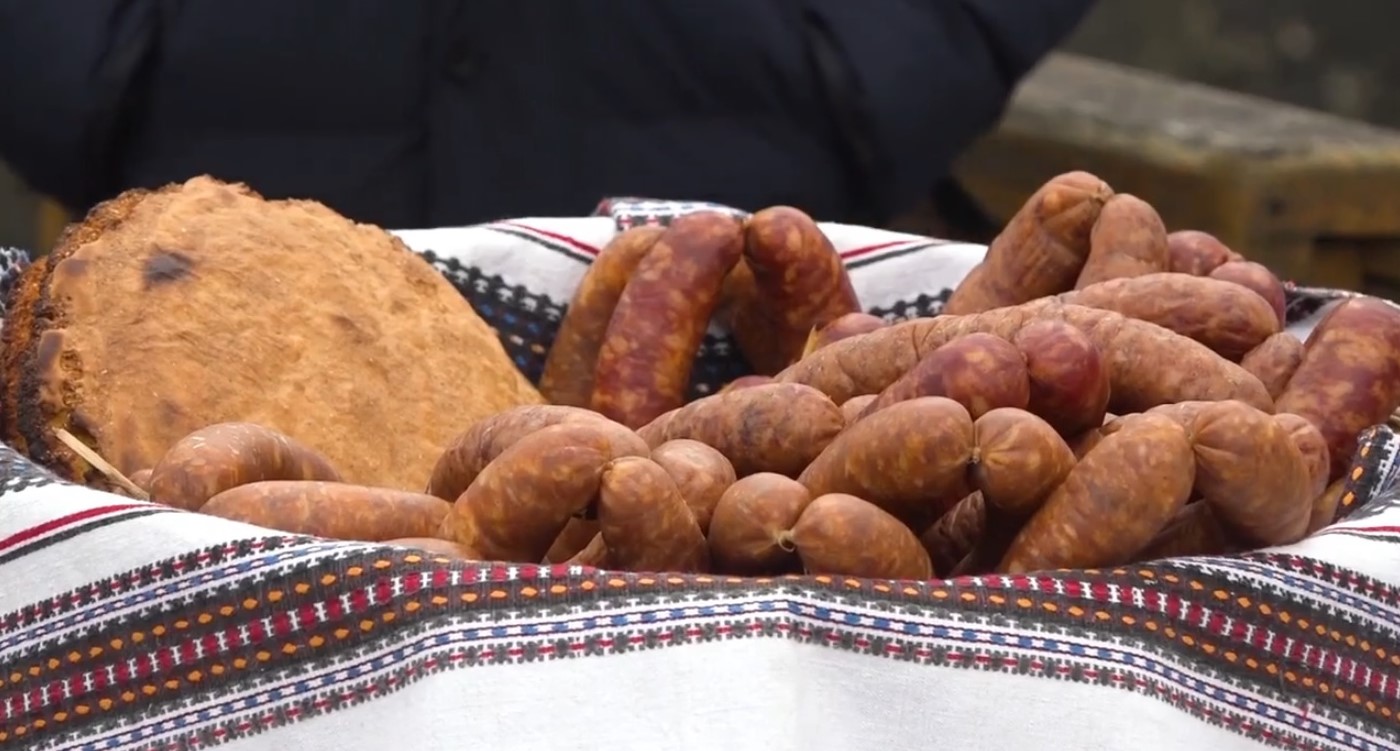
The members of the Ethno Fletno Association are working on protecting Samobor cornbread, usually eaten with Samoborska cesnjofka, but also other home-made dishes. / Screenshot Televizija Zapad
A few years ago, the City of Samobor even launched the Češnofka Festival, but due to the coronavirus pandemic, it was not held last year. This year, it will be held if the epidemiological situation allows it. And not only that. On the occasion of protecting samoborska češnofka, the Deputy Mayor of Samobor, Željko Stanec, announced a center for various Samobor tradition guardians.
Samobor gastronomic delicacies available in the "to go" offer
The diligent hands of the people of this region write the history of taste worth experiencing. Although the restaurants are still closed, all the flavors of the Samobor region are available in the "to go" offer in the "K Gabreku 1929 "cellar, the favorite Kavana Livadić, and "U prolazu" confectionery for the well-known kremšnite in Samobor.
Therefore, you can spend this 'almost' spring weekend in Samobor, 30 minutes away from Zagreb's capital, with protected indigenous flavors. This charming town along the Slovenian border dates back to 1242 and the charter by which King Bela IV confirmed the status of a free royal trading post.
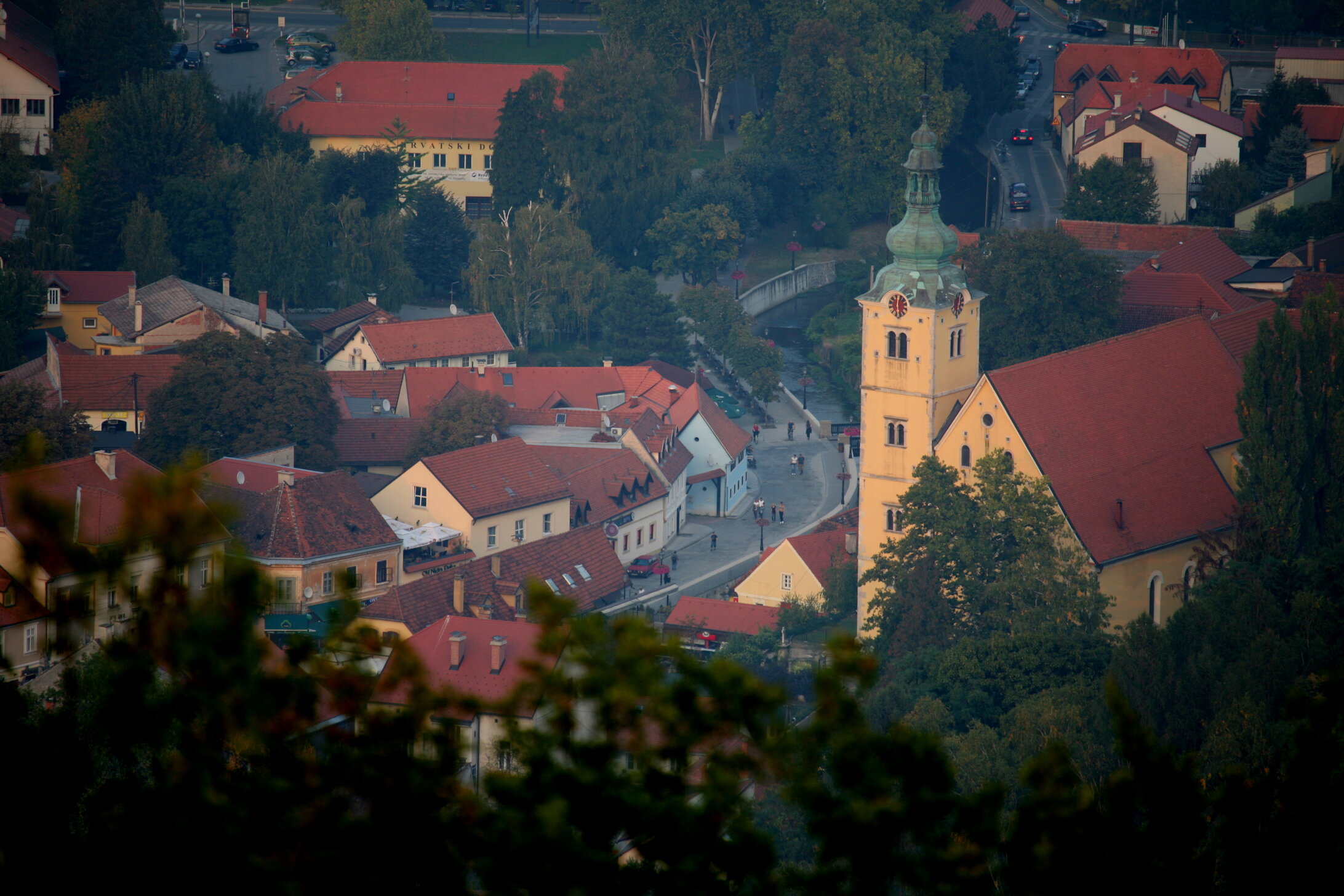
Samobor / Zagreb County Tourist Board
Also, Samobor Square is one of the few where all buildings are protected monuments of the first category. Right next to the main square, in the Filipec family tasting room, you can taste another Samobor gastronomic icon – bremet, the most famous liqueur in the Zagreb region. Samobor bermet is an aromatized red wine made from selected varieties of Portuguese and Frankovka grapes with wormwood and southern fruit. The secret recipe dates back to the time before Napoleon.
Zagreb people's favorite excursion destination
This urban pearl of Zagreb County, with its preserved old town, but also with numerous cultural sights, has always attracted excursionists and tourists.
A walk through Samobor comes across the Samobor Museum, the former dock of the composer Ferdo Livadić and a gathering place for cultural greats of that time. The Old Samobor Town ruins, a former castle that watches over the town in the lowlands, hide its turbulent history.
From 1268 until recently, this building was owned by many different families. It used to flourish with life, and now there is only one beautiful monument left to the destructive ravages of time. Over the centuries, numerous nobles and kings were the lords of Samobor-grad, from the Czech king Otokar, who built it in 1268, to Arpadović, Frankopan, Erdody, Matija Korvin, and many other blue blood families.
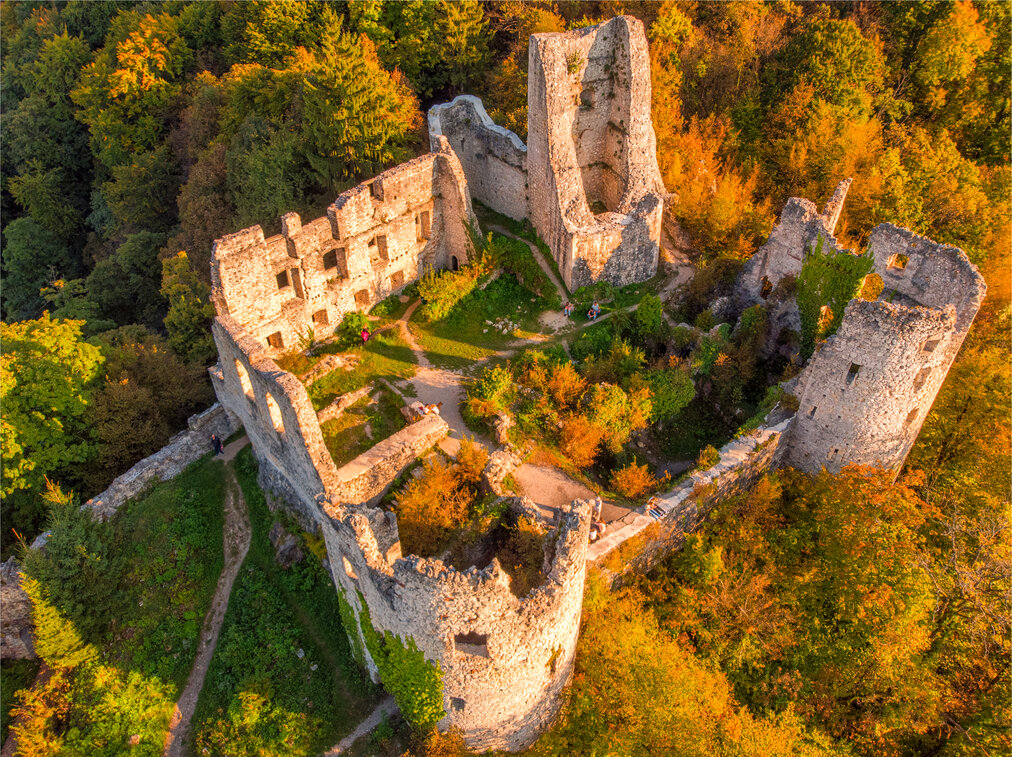
Ruins of Samobor Old Town / R. Klarić, Zagreb County Tourist Board
As the owners changed, so did this castle. In 1902, the Old Town ended up in Samobor's ownership for 5,293 crowns. Since then, attempts have been made to rebuild it, but no attempt has borne fruit. But maybe even better, because the castle in this form has some magic that it might not have if it wasn't in this state. There is a spirit of the time in it. It hides among the walls and swims among the surrounding trees. This place truly breathes some unique energy. The fort is located in a forest not far from the center of Samobor.
Oh, and did you know that Samobor's Old Town was almost fatal for Jackie Chan, who nearly perished here while shooting the famous film God's Armor?
Oldest mine, nature park, mountain peaks, and educational trails
Only five kilometers away from Samobor, in the Rude village, you can visit the Mine of St. Barbara, one of Europe's oldest copper and iron mines. This small settlement gave rise to the mentioned first protected gastronomic product of the Zagreb County – a crispy salt pie Rudarska greblica, once a modest snack of local miners.
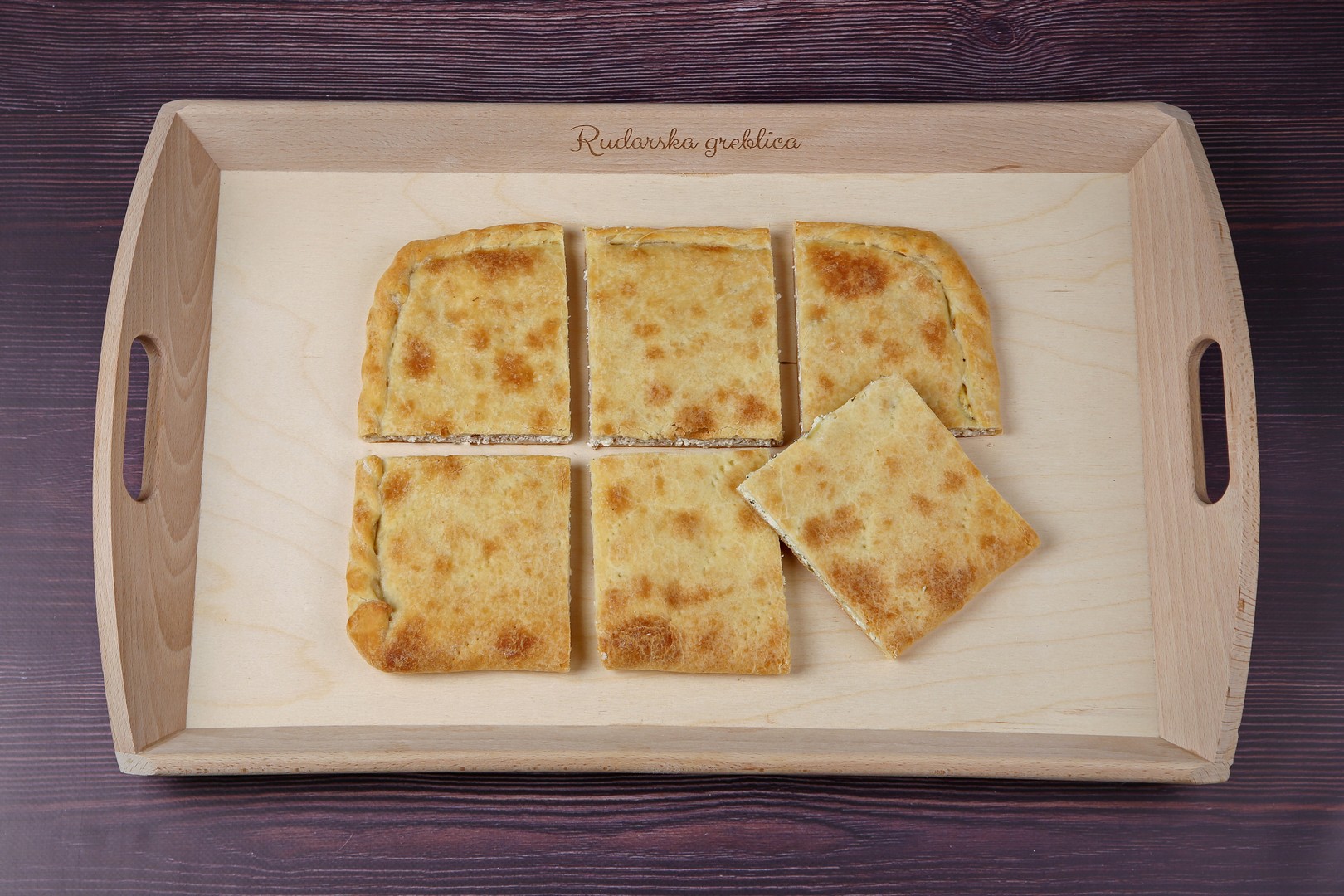
Rudarska greblica / Josip Škof, Zagreb County Tourist Board
Outside Samobor, with a walk in the fresh air, unforgettable views uphill of the Samobor Hills, a protected Nature Park together with Žumberak, await to be discovered. There are many marked trails, and they will satisfy both beginner walkers and ambitious climbers. Although none of them is higher than 1000 meters, the peaks Oštrc, Japetić, and Okić are key places in Croatian mountaineering.
The first trip under the Croatian Mountaineering Association's auspices was organized in 1875 to Oštrc, and the ascent of the writer Dragojla Jarnević on the steep side of Okić in 1843 was Croatian's first recorded alpine venture.
You can add an educational note to the trip by visiting the Budinjak Eco Center and the Educational Trail of Princes, a prehistoric site with a site of old burial mounds, or the Ethno House under Okić. In this rural household, time stood still more than a century ago.
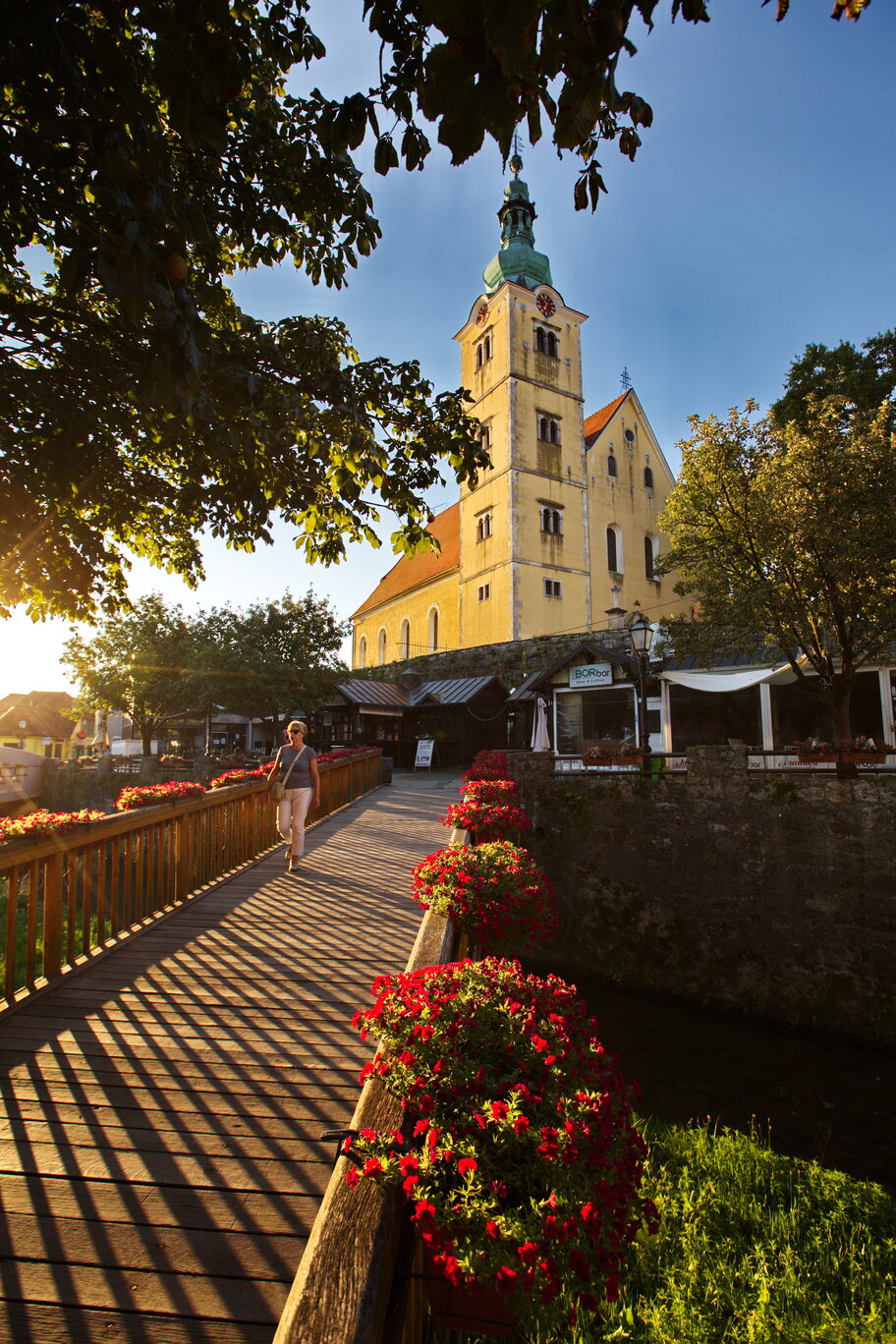
Welcome to Samobor / Josip Škof, Zagreb County Tourist Board
Source: Zagreb County Tourist Board
To read more news from Croatia, follow TCN's dedicated page.
Crotaste House of Croatian Food Opens in Downtown Zagreb
ZAGREB, Dec 18, 2020 - The Crotaste House of Croatian Food, a promotional-sales outlet with a wide range of domestic products from all around Croatia, opened in downtown Zagreb on Friday, offering 220 various products from over 100 producers.
Crotaste, located near Europe House in the city's centre, offers a wide range of domestic products including Slavonian salami, Dalmatian prosciutto, GMO-free eggs, asparagus, wine, olive oil, Pag cheese and fish from the Adriatic.
The project is the result of cooperation between the Croatian Agriculture and Food Agency (HAPIH), the Agro-Klaster company from Vukovar-Srijem County, the Ministry of Agriculture and Vukovar-Srijem County.
"Our aim is to secure a place for SMEs from all over Croatia to promote and sell their products with the European quality label in the centre of the capital city, which is particularly important during these difficult times of the corona crisis," HAPIH director Krunoslav Dugalic said ahead of the official opening.
Opening the Crotaste House, Agriculture Minister Marija Vuckovic underscored that this is finally the realisation of the idea of connecting Croatia's blue and green regions.
"Croatia's agriculture and food industry is continuing to work and develop during these difficult times. We are managing to make some structural changes, and despite everything we have registered growth in agriculture and the food industry of a net 5% in production, and 10% in productivity compared to last year, which is an excellent result." Vuckovic said.
She said this was possible in part due to the government's jobkeeping measures, adding that EU funds helped boost agricultural development as well as other sectors such as fishing, the wood industry, and wine production for which COVID loans from the HAMAG agency for SMEs can be expected.
"We have secured HRK 360 million in income support for farmers who experienced a fall of 15% and many of them are wine producers," she said, adding that despite travel passes being introduced, farmers will be allowed to work as they did during the spring lockdown.
Croatia Ranks 4th in Undiscovered Gastronomic Destinations in World
November 17, 2020 – Croatia receives another gastro recognition as the gastro portal Chef's Pencil has declared it as one of the best undiscovered gastronomic destinations in the world.
As Večernji list reports, it is a competition named "The Most Underrated Foodie Destination in the World" conducted among 250 renowned chefs and culinary experts, who singled out under-exposed gastro destinations that can stand alongside popular gastro destinations such as France and Italy.
They selected the top 10 countries that can boast of their gastronomic offer and wealth but are not widely-known as gastro destinations. Croatia took a high fourth place on this list, behind the Philippines, Vietnam, and Mexico. It is followed by Thailand, Peru, Australia, Jamaica, Portugal, and Norway.

Screenshot Chef's Pencil
"Croatia has become a really popular place to holiday over the last few years. And who can blame all those holidaymakers for reaching for pristine Adriatic waters, spectacular beaches, sublime Mediterranean climate, atmospheric Roman ruins, incredible national parks, and soaring mountains… Have I mentioned the food yet? And maybe that’s why it’s an underrated foodie destination – the country has so much going for it, the food has to fight for attention," they say from Chef's Pencil about the Croatian cuisine, noting that it's hard to pinpoint it as it varies from region to region.
"Dalmatian food is typically Mediterranean with lots of fish, veggies, and olive oil. Istrian cuisine is similar although they have their own special approach to beans and pasta here. In Zagreb there’s more of a European vibe with meat and a special attachment to cabbage, while in Slavonia its pork and more pork and lots of paprika," they explain, naming some of the best Croatian food such as sheep's cheese, cured ham, black risotto, octopus salad, brudet, sarma, and more.
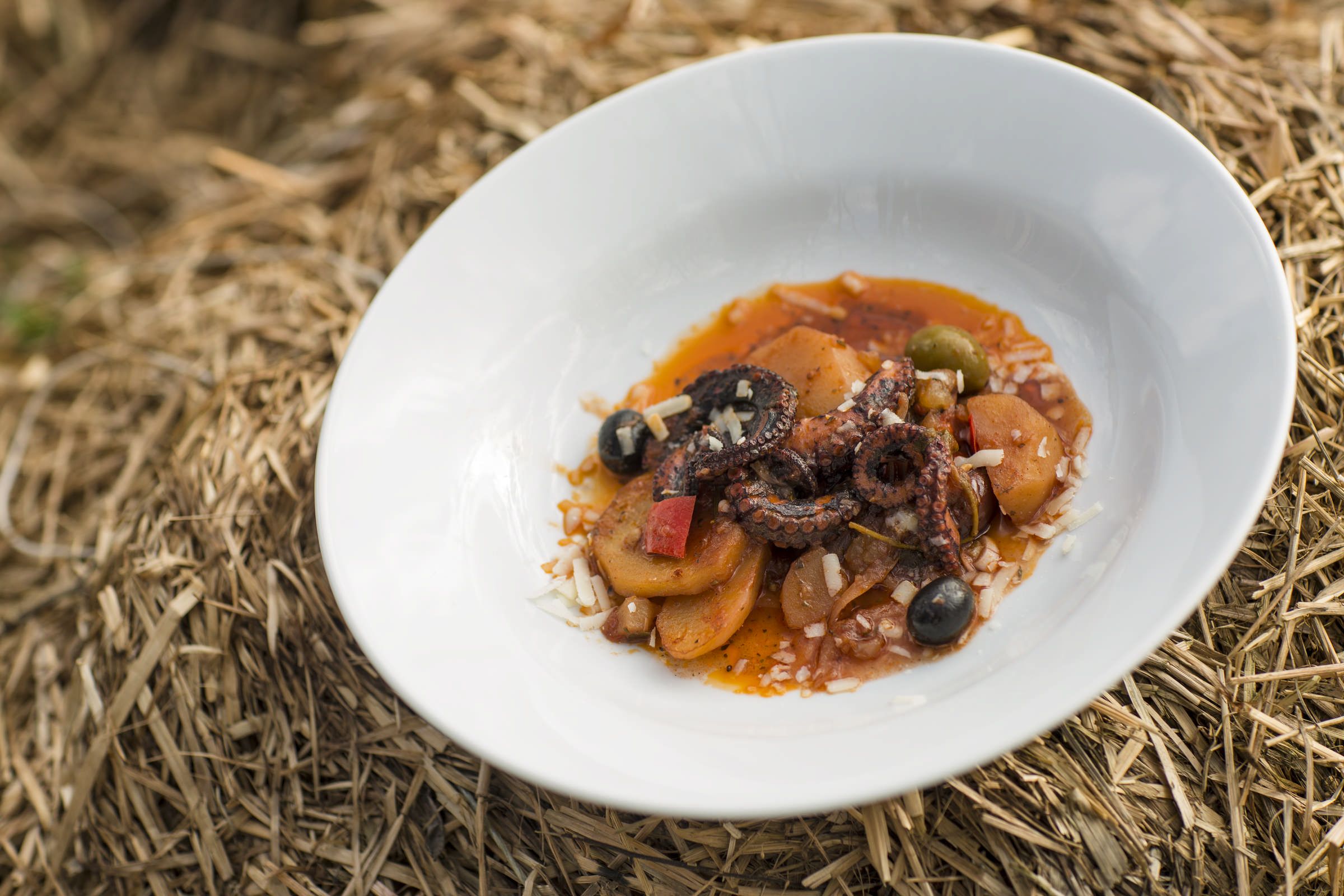
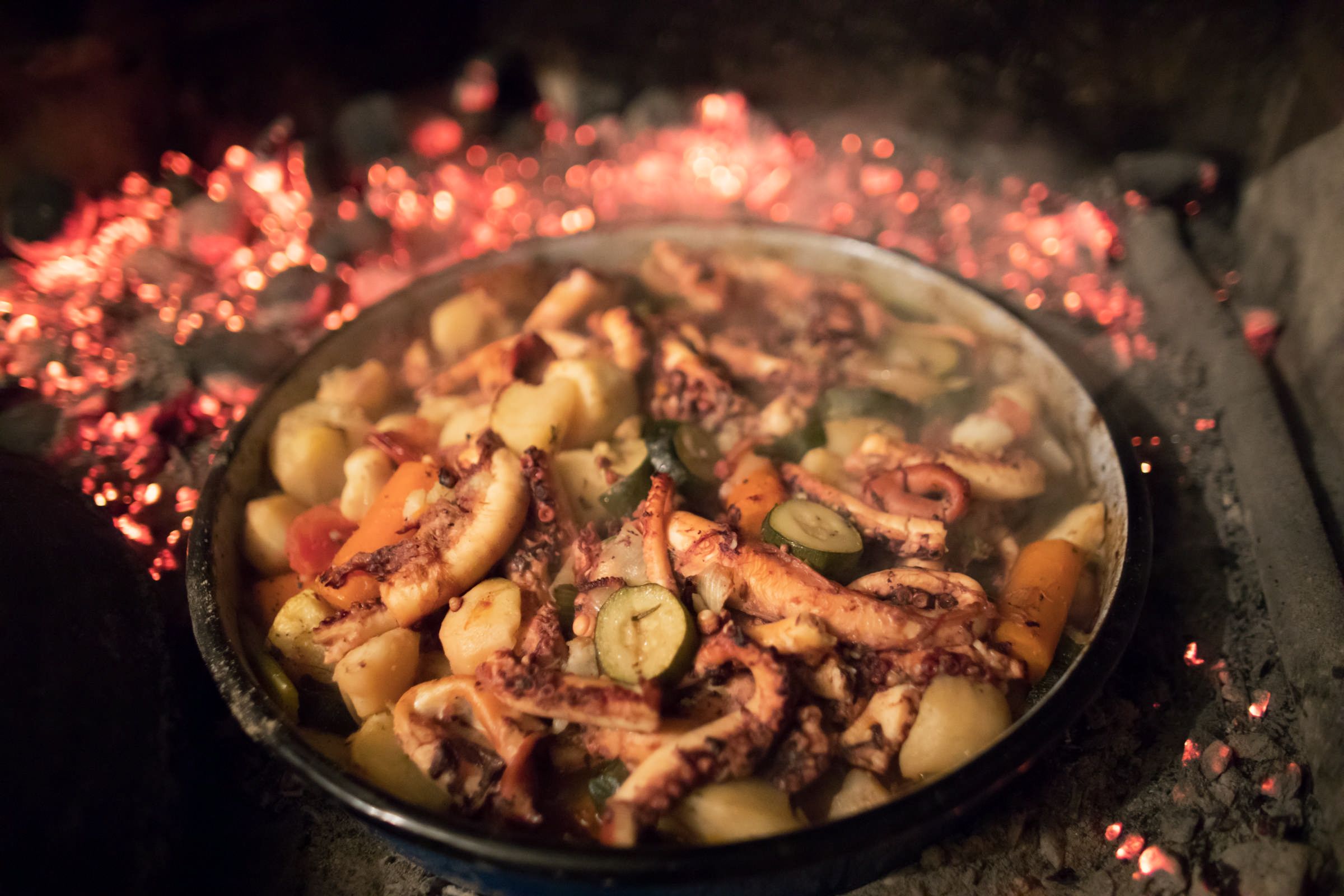
Octopus salad / Copyright Romulić and Stojčić
Although Croatia is already recognized for its gastronomic excellence, offering unforgettable gastronomic experiences for all food lovers, chefs, and experts who participated in the survey believed that our country deserves additional international recognition.
"Recognitions like this give us an additional incentive to continue the development of our gastronomic scene and to continue to promote ourselves as an attractive and quality gastronomic destination, which we really are," said Croatia National Tourist Board director Kristjan Staničić.
Recall, in 2020, the Croatian National Tourist Board presented Croatian gastronomy on this renowned portal, as well as Croatian chefs and regional gastronomic specialties.
Kvarner was presented by the youngest Croatian chef with a MICHELIN star, Deni Srdoč, who shared with readers a recipe for a lamb dish "Heritage lamb". Marko Gajski, the chef of LD Terrace in Korčula, who was also awarded a MICHELIN star this year, presented the Dalmatian region through his original recipe for Komiža bread, while chef Bruno Vokal from Noel, Zagreb's first MICHELIN star restaurant, shared his original recipe for "Deconstructed štruklji". Marina Gaši, chef and owner of the family restaurant Marina in Novigrad, presented the flavors of Istria via sardine tartare. The story of Croatian gastronomy was concluded by Tomica Đukić, chef of the Osijek Hotel and official chef of the Croatian national football team, who presented the rich flavors of Slavonia with a flavored fillet of a black Slavonian pig with pumpkin and beetroot.
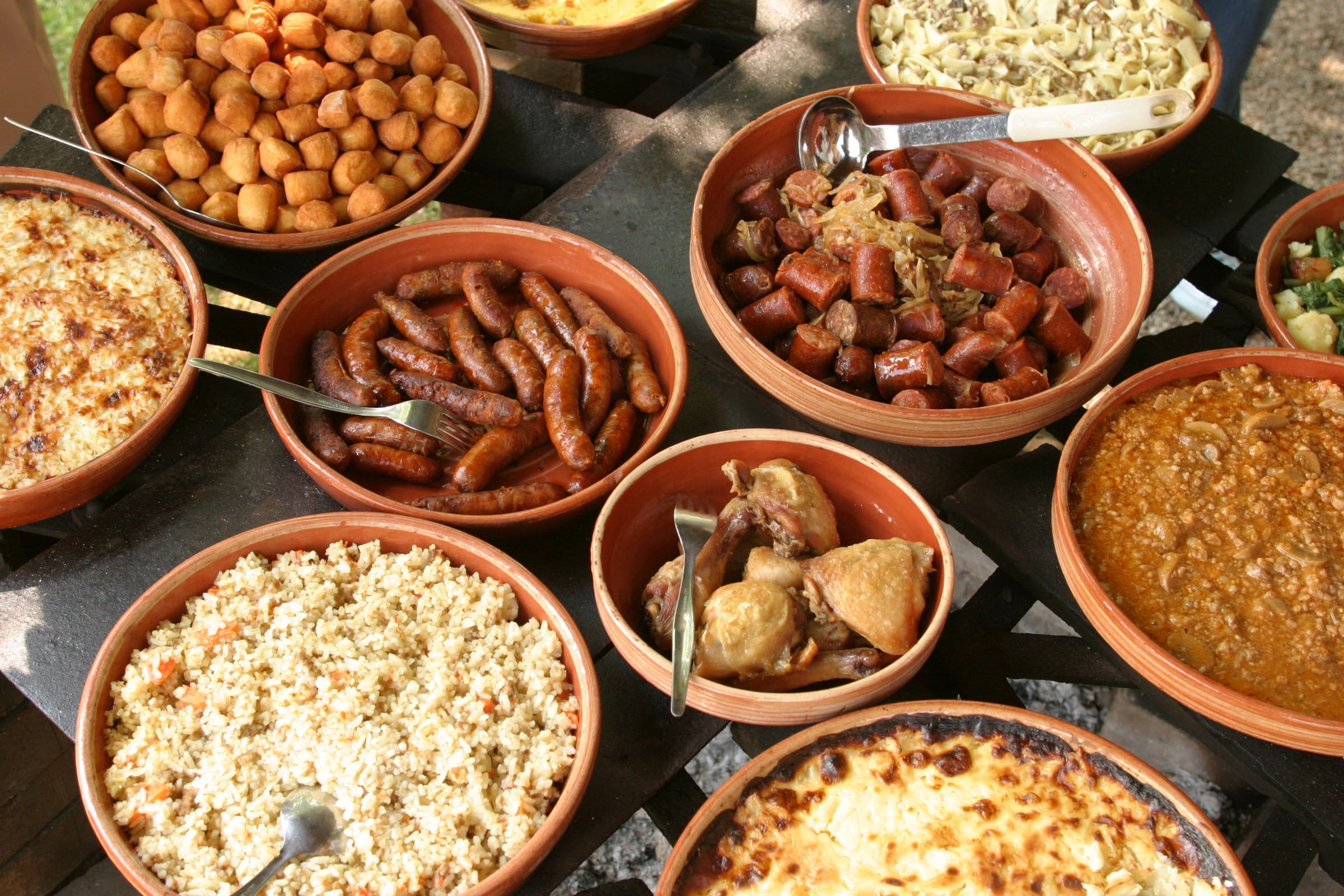
Rich gastronomic offer from Slavonia / Copyright Romulić and Stojčić
Neretva Valley Expecting Good Harvest Season Despite Coronavirus Crisis
October the 1st, 2020 - It's rare to read anything about the coronavirus pandemic bringing positive results to anyone or anything, but it does happen, and not only to companies who make masks. The Neretva Valley, famous for its abundance of fruit which can be seen sold all over the country on stands and in various stories in the colder months, has done very well indeed and is expecting a great harvest season this year.
As Poslovni Dnevnik writes on the 30th of September, 2020, mandarin oranges are the only Croatian export fruit, whose harvest officially begins during the last days of September as autumn overtakes summer. While the Neretva Valley's fruit growers are anxiously awaiting the harvest season, which will take place under unprecedented epidemiological conditions, it seems that the coronavirus could actually go hand in hand with them as opposed to against them, as has been the case with just about every other field imaginable.
Namely, higher demand is expected for the Neretva Valley's fruit, as it is packed full of vitamin C, which is traditionally used to strengthen immunity and remain healthy, writes Slobodna Dalmacija. As such, the Neretva Valley's many fruit growers hope to be able to sell their mandarin oranges just as well, if not better, than in previous years.
However, in Croatia, it has been proven time and time again that nothing is ever particularly certain when it comes to agriculture, because every year imports destroy domestic production during the traditional season of harvesting homegrown fruit and vegetables. Owing to that, it’s hard to assume that in the case of the Neretva Valley's mandarin oranges, the scenario from May will be repeated, when domestic strawberry growers sold their strawberries and still made good money because there were no imports due to the coronavirus and the restrictions that came as a result of it.
Initial estimates show that the Neretva Valley growers will have a production of about 32,000 tonnes of mandarin oranges this season, which is a mediocre crop, but good quality is expected regardless.
For the latest travel info, bookmark our main travel info article, which is updated daily.
Read the Croatian Travel Update in your language - now available in 24 languages
There's a Place for Croatian Food in Germany, Honey Already Popular
Is there a place for Croatian food on the competitive market of nearby Germany? It seems that yes, there is, and rich Croatian honey has already won the hearts of many German shoppers.
As Poslovni Dnevnik/Bernard Ivezic writes on the 1st of June, 2020, GoGreen, the brand of Croatia's largest agricultural cluster and the first domestic smart market until three years ago, was taken over and reactivated in mid-March by the Zagreb-based company Anytime Logistika. In the new business, GoGreen is only part of the business. The main focus is on logistics, wholesale and exports.
Anytime Logistika has just done its first job for Germany's largest retail chain, Edeka, which is 50 percent larger in Germany than Lidl and Kaufland combined and holds more than a fifth of the German market. Among other things, it placed Croatian food such as honey there. Alan Slapar, who started the GoGreen brand, and who is now working at Anytime Logistika on the development and digitalisation of domestic producers, says that Andrea Rukavina runs the business here in Croatia and Tomislav Hunic runs it over in Germany.
"The deal with Edeka was agreed upon by Tomislav Hunic, who lives and works in Germany, and who noted that all those there in the field, already present on the markets, find it easier to communicate with local procurement managers than even we from Croatia can,'' said Slapar. He added that he is already working on other customers because the market for Croatian food and agricultural products in Germany really does exist.
Here in Croatia, the company is working to strengthen its storage capacity. Anytime Logistika currently has a warehouse in Sesvetski Kraljevec of 140 square metres in a cooling mode from 2 ° C to 6 ° C. However, they are also building a new one which will span a significantly larger 750 square metres and in which there will be a deep-freeze cooling regime of -18 ° C and a temperature of 12 ° C.
"The warehouse will be equipped for the quick freezing and packaging of fresh and seasonal fruits, and there will also be a special system for washed and sliced vegetables, such as already peeled and sliced potatoes, zucchini spaghetti, salads and such things,'' explained Slapar.
They are also arranging warehouse and sales points in Zagreb and the surrounding area, but the emphasis is being placed primarily on wholesale. He stated that that is why they offered support to online stores, launched the HoReCa-Point sales channel for catering and decided on a precedent in Croatia. On the Anytime Logistika website, it will offer the possibility to order all products available in stock in real time.
"One of the basic problems in the distribution of agricultural products in Croatia is that producers don't even have a catalog of their products so that wholesale or retail customers can even come to find out what they actually have to offer. And if the customers don't know, then they won't even bother ordering,'' noted Slapar.
He stated that they are therefore working intensively on digitalisation with the Croatian producers they work with. Each manufacturer that enters their system also enters a catalog which they then offer on various markets depending on the product and their respective capacities. He pointed out that he wasn't surprised that doing business that way has intensified over the past two months and that family farms have taken an interest in GoGreen yet again.
"I don't attribute the interest so much to GoGreen as much as I do to the new chaos and hysteria, because Croatia hasn't invested in more creative ways of distribution for years, and with the arrival of the new coronavirus and isolation measures, it proved to be a big issue for all companies," explained Slapar.
Anytime Logistika currently has, he said, even better collaboration with larger manufacturers than it has with smaller ones. He explained that this is the result of a market shock.
"Because of these sudden market declines, now 'everything is possible'', ''everyone is good'' and there is potential in everything," Slapar concluded.
For more on Croatian food, produce and other products, follow Made in Croatia.


